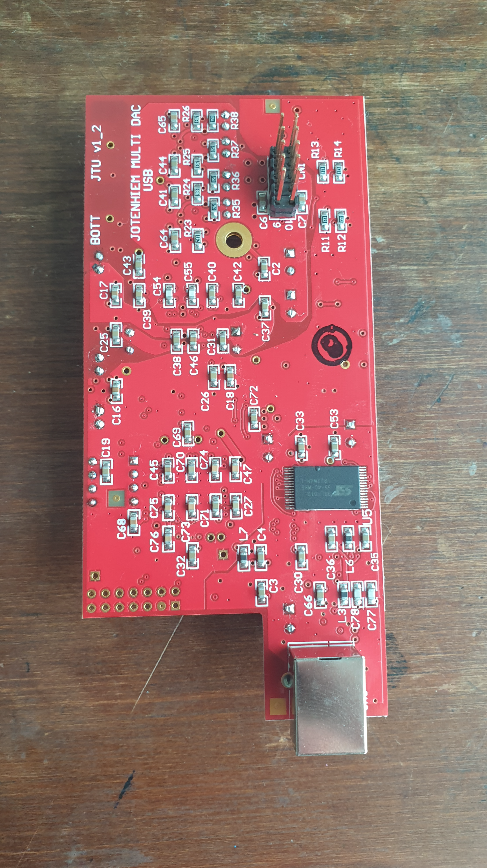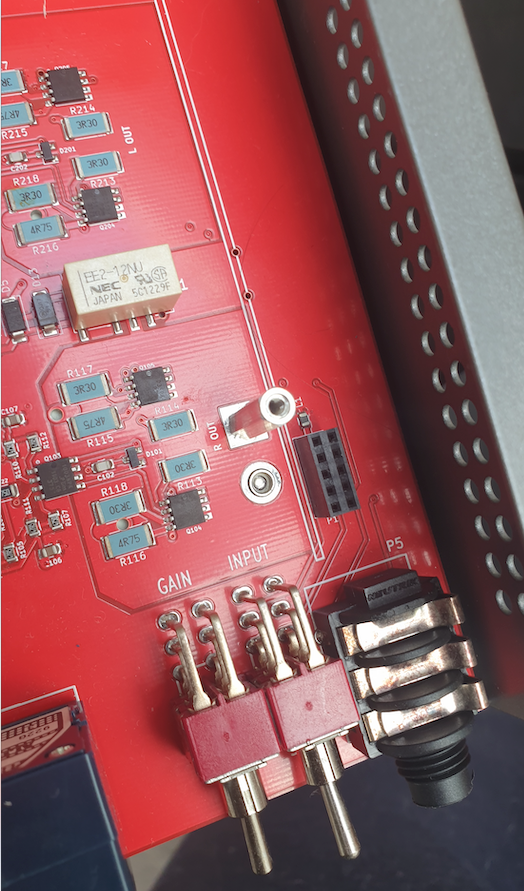Mightygrey
Headphoneus Supremus
Hey guys, hoping to get some pointers from your collective heads and experience on this one!
Due to using an external DAC (Bifrost 2), I don't really have much use for the Multibit card that came with my amp, so I'm hoping to put it to use in a DIY project. What I'd like to do is use it as a USB input in an all-analogue amplifier, and route the analogue output of the DAC card to the single-ended RCA inputs of the amp.
Here's what Schiit's Multibit DAC card looks when removed from the chassis of a Lyr/Asgard/Jot/Rag etc:


Here is the underside of the card, for reference:

The card is connected to the amplifier PCB board using the dual-head 10-pin connector, shown produding out of the DAC card, and fits into the corresponding female 10-pin connection on the amp:

I'm not certain how I can test the outputs on the 10-pin male connection of the DAC card to understand what pins (or combinations of pins) are L/R and ground.

The DAC card is USB bus-powered, not mains powered. Using a digital multimeter set to measure resistance (ohms), it is reading that there is resistance between pins 1,4,5,6,9,10 (any combination of these with one another). There is no resistance in pins 2,3,7,8.
Setting the multimeter to DC and playing a 60Hz test tone into the DAC card, there is a small negative DC voltage measurement in pins 3 and 8, when the black terminal is set to the screw hole on the PCB board (which I'm guessing is ground) and the red terminal is applied to each pin. I am unable to detect any AC voltage when using the same method.
If anyone has any pointers I'd be extremely grateful!
Due to using an external DAC (Bifrost 2), I don't really have much use for the Multibit card that came with my amp, so I'm hoping to put it to use in a DIY project. What I'd like to do is use it as a USB input in an all-analogue amplifier, and route the analogue output of the DAC card to the single-ended RCA inputs of the amp.
Here's what Schiit's Multibit DAC card looks when removed from the chassis of a Lyr/Asgard/Jot/Rag etc:


Here is the underside of the card, for reference:

The card is connected to the amplifier PCB board using the dual-head 10-pin connector, shown produding out of the DAC card, and fits into the corresponding female 10-pin connection on the amp:

I'm not certain how I can test the outputs on the 10-pin male connection of the DAC card to understand what pins (or combinations of pins) are L/R and ground.

The DAC card is USB bus-powered, not mains powered. Using a digital multimeter set to measure resistance (ohms), it is reading that there is resistance between pins 1,4,5,6,9,10 (any combination of these with one another). There is no resistance in pins 2,3,7,8.
Setting the multimeter to DC and playing a 60Hz test tone into the DAC card, there is a small negative DC voltage measurement in pins 3 and 8, when the black terminal is set to the screw hole on the PCB board (which I'm guessing is ground) and the red terminal is applied to each pin. I am unable to detect any AC voltage when using the same method.
If anyone has any pointers I'd be extremely grateful!







